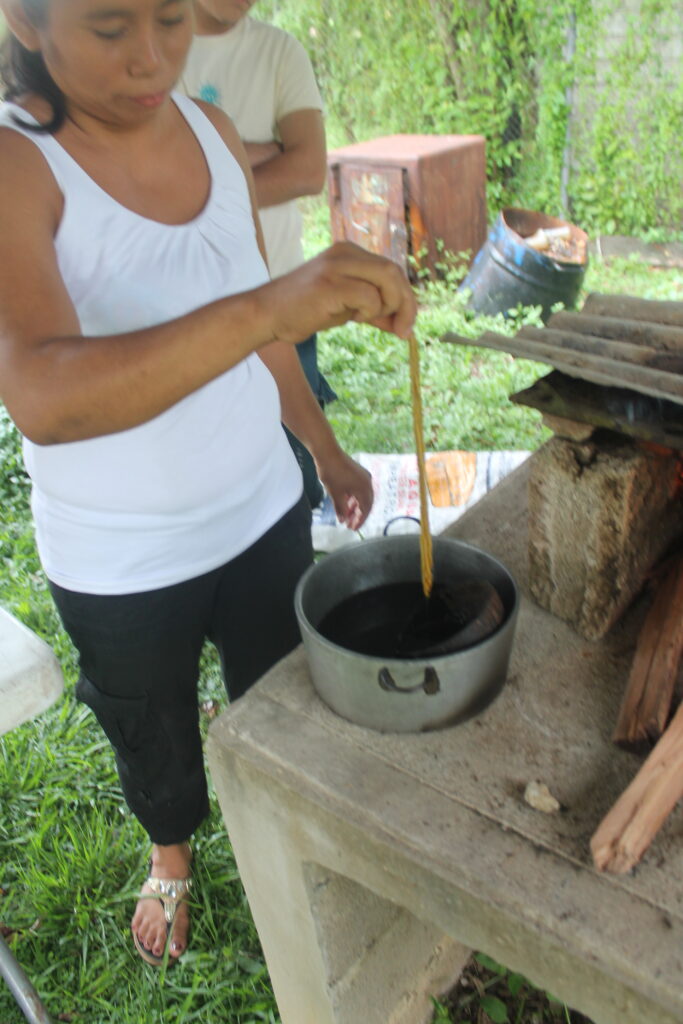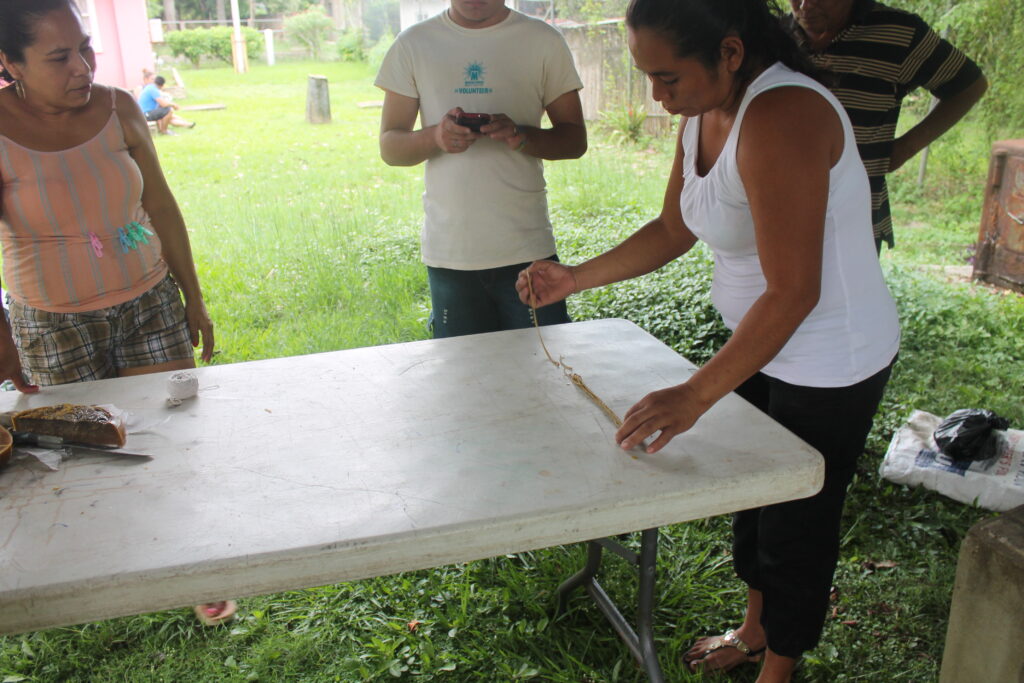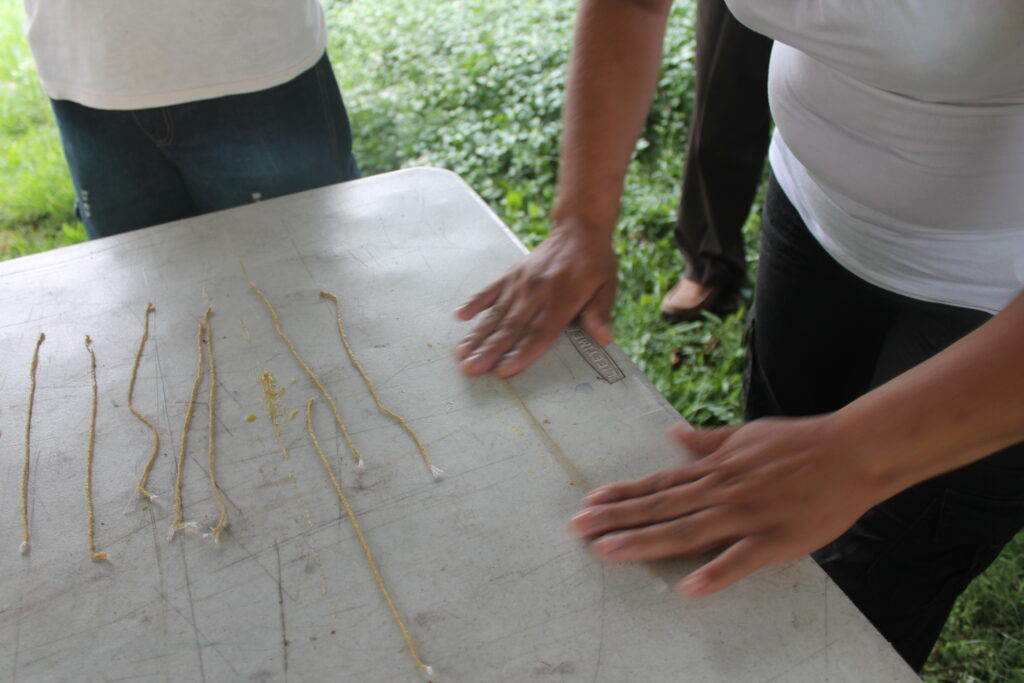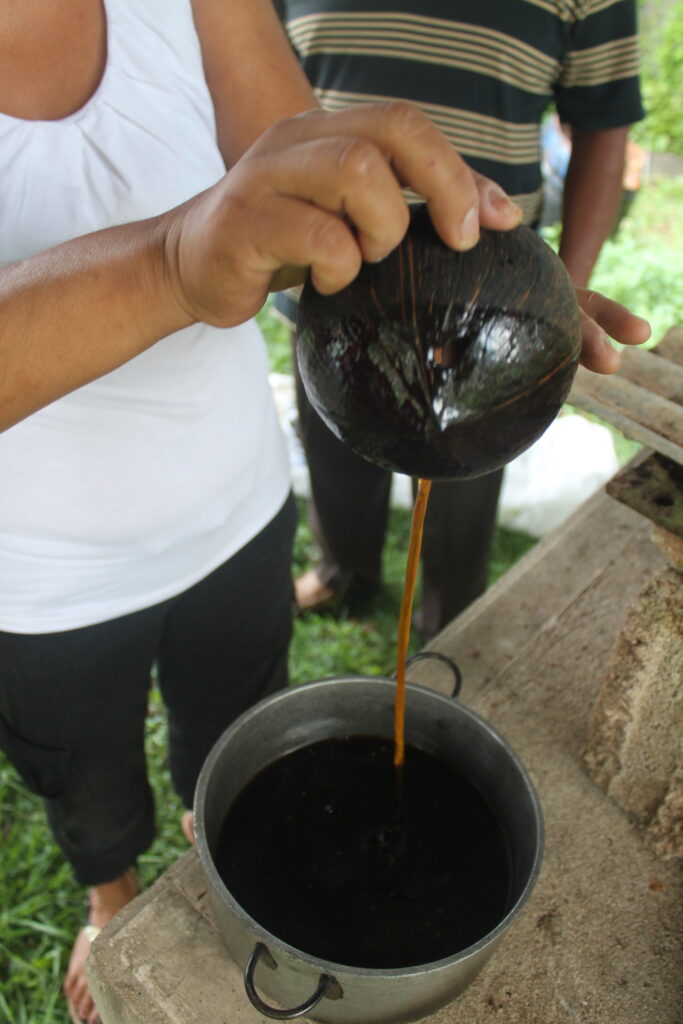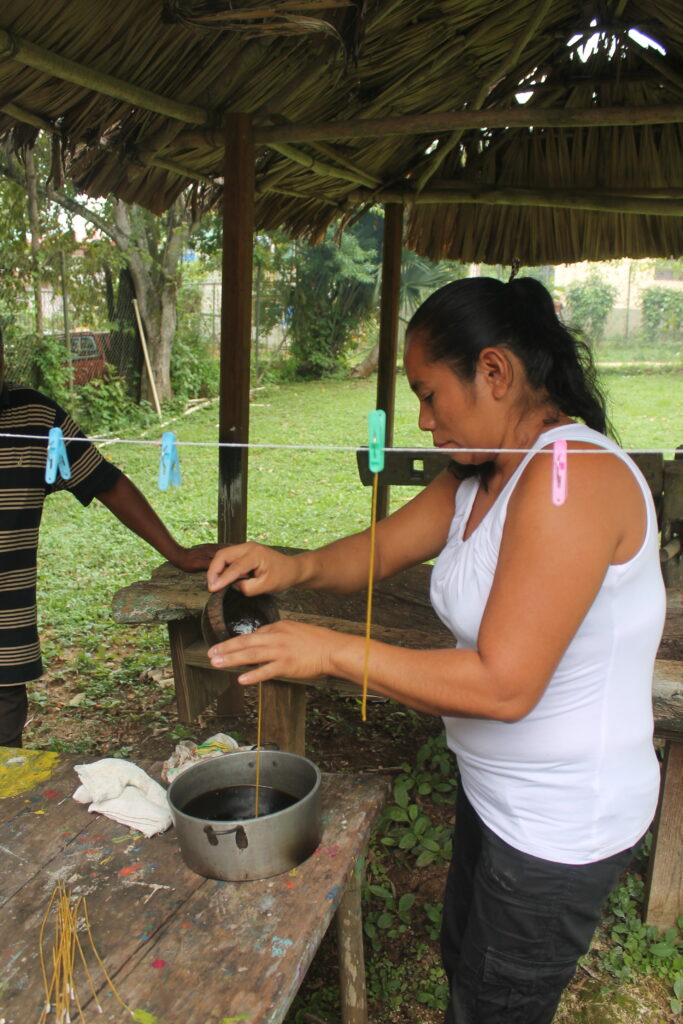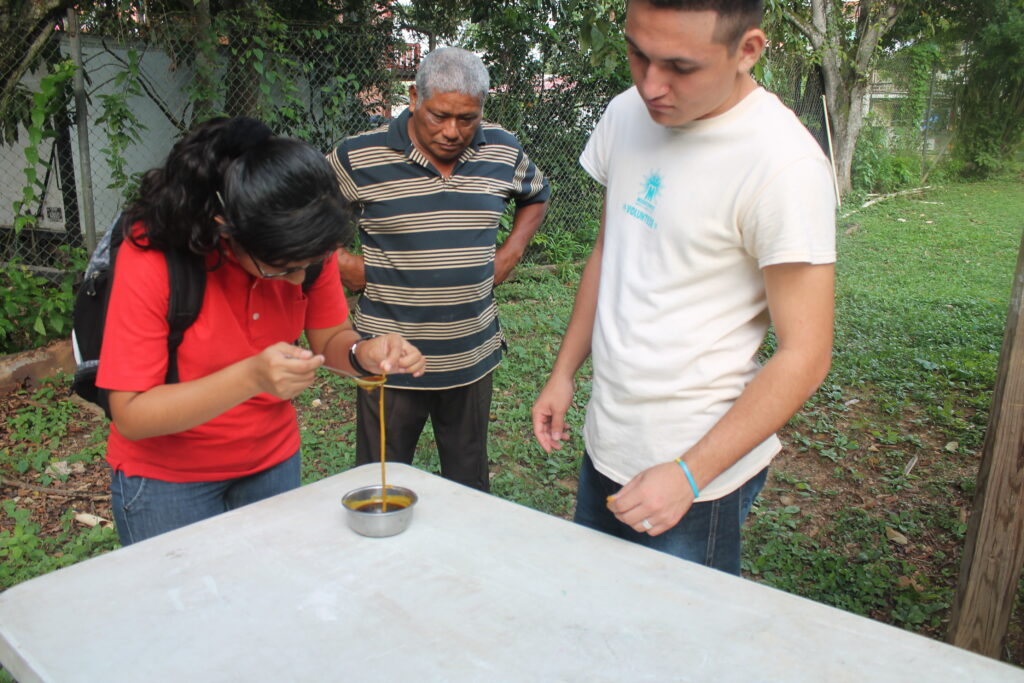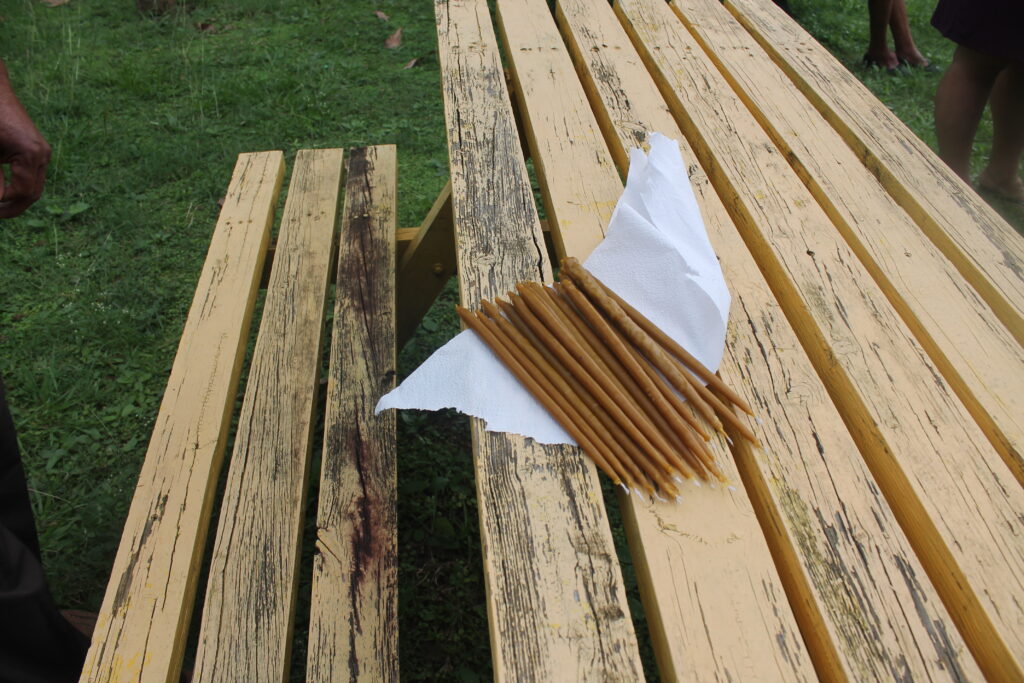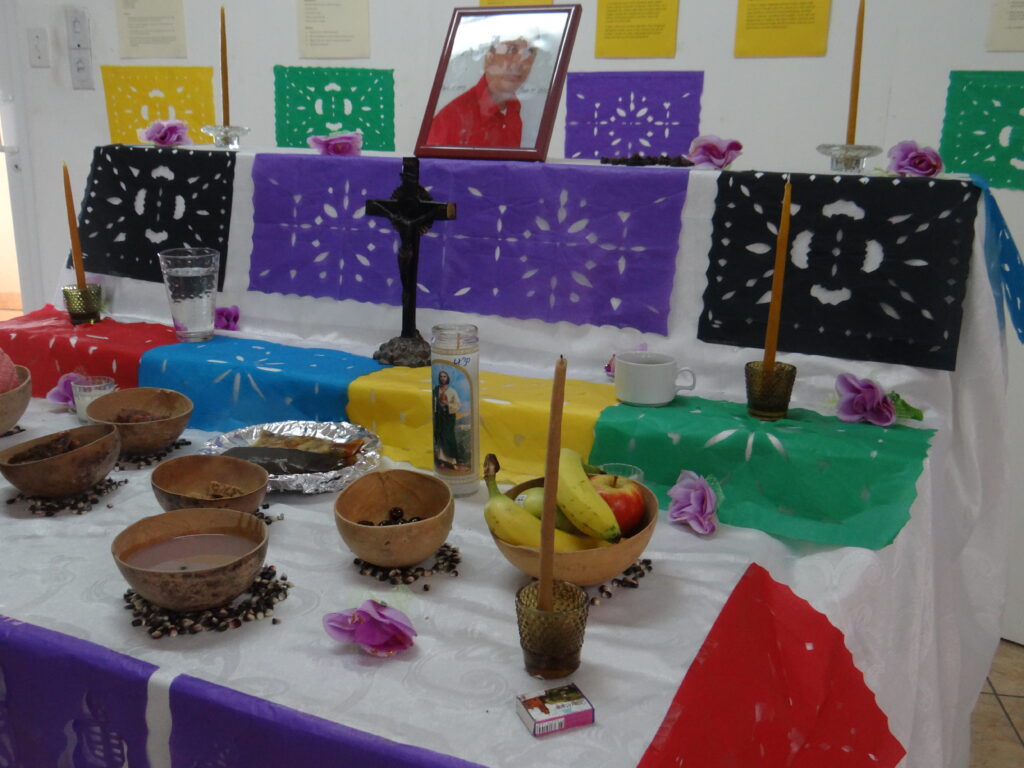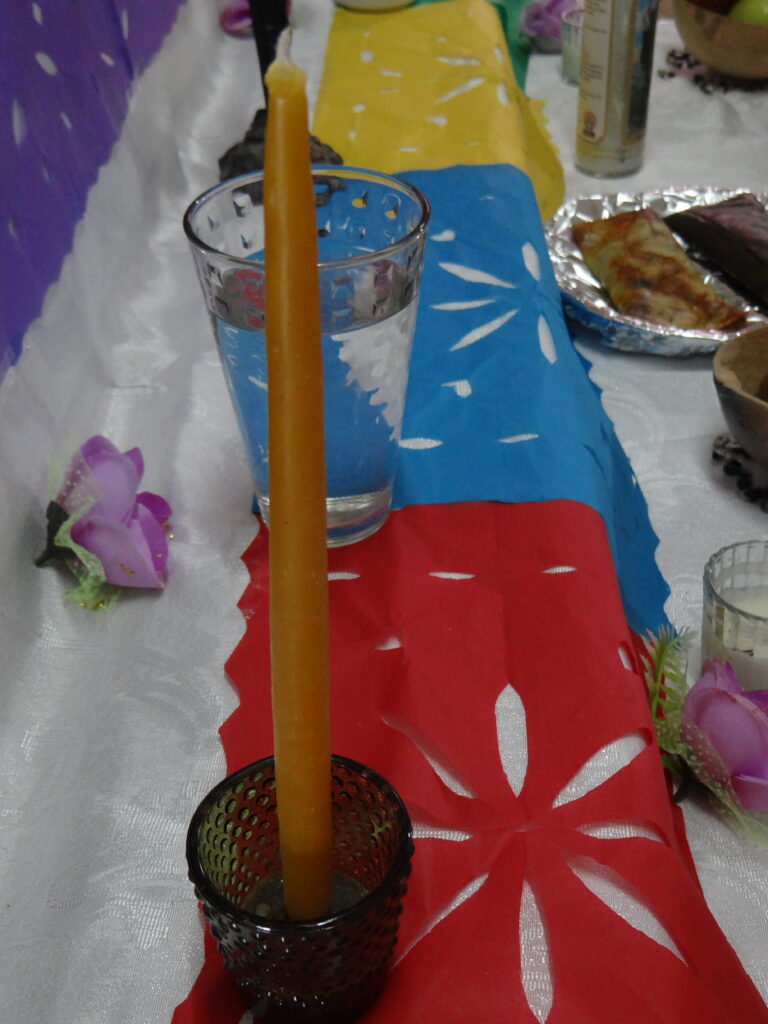Description
The skill of Beeswax Candle Making is practiced in August Pine Ridge Village, Orange Walk District. Other communities in the Cayo District such as Benque Viejo del Carmen and San Ignacio also engage in the practice.
The Beeswax candles are most frequently used during religious rituals and activities, particularly for altars prepared at Rezos (Rosary) during ‘Finados’ in November and ‘Dia de la Virgen de Guadalupe’ in December, among other religious activities.
Those who make beeswax candles consider it to be a pure object used to illuminate pathways, thus solemn dedication and reverence are required in order to make them. The elements used to create the candles are obtained directly from the environment, God’s creations; therefore, preparation is very important. The most solemn candle makers believe that in order for the candles to remain pure, practitioners must refrain from sexual activity at least twenty-four (24) hours before the preparation process commences. Women who are menstruating are also not encouraged to participate in the elaboration process. It is believed that violation of these strict protocols will prevent the candles from hardening.
Traditionally, trips to forested areas were necessary to identify beehives for extracting wax from honeycomb. In modern times, the wax is acquired from local stores. Traditional candle makers note that wax acquired this way is no longer considered pure, as it is often mixed with other synthetic chemicals for commercial use.
The preparation process includes melting the wax, in the past over a fire-hearth; once the wax is melted, a cloth string is submerged into the mixture to create the first coat of the candle. After it is dry, wax is repeatedly dripped over the first layer until the candle is at the desired width. They are then hung to dry until ready.
Transmission and Safeguarding Practices
Beeswax Candle making has been passed down primarily through inter-generational transmission. It has been a family tradition in many Mestizo communities to prepare the candles for cultural and religious events such as ‘Dia de Los Finados’ and ‘Dia de la Virgen de Guadalupe’. While they are often only made for these cultural or religious events, cultural practitioners and community members have taken the initiative to share and teach this knowledge in order to safeguard the knowledge associated with making the craft.
The Banquitas and Benque Houses of Culture have hosted workshops where the skill is not only taught, but also knowledge of the importance and significance of the candles in rituals is shared. This is in an effort to safeguard and transmit this traditional skill.
Continuity of Beeswax Candle Making
Beeswax Candles are made primarily for cultural and religious events such as ‘Dia de los Finados’ and ‘Dia de la Virgen de Guadalupe’. With a more diverse religious landscape in Belizes, many believe that diminishing numbers in Catholics has led to a decrease in the need for Beeswax Candles and thus candle makers.
With initiatives led by the Houses of Culture, cultural practitioners and community members, however, efforts to safeguard this skill are gaining momentum.
Associated Cultural Forms, Traditions and Knowledge
(What other cultural forms and traditions, skills and knowledge are necessary for carrying out this practice?)
Finados; Dia de la Virgen de Guadalupe; Environmental Knowledge: Sourcing Materials and Bee Handling
Spaces for Enactment
(What places, spaces and locations are integral to its practice?)
- Private Residences
- August Pine Ridge Village, Orange Walk District
- Benque Viejo Del Carmen, Cayo District
- San Ignacio, Cayo District
- Banquitas Houses of Culture
- Benque House of Culture
- San Ignacio / Santa Elena House of Culture
Communities and Groups Involved
- August Pine Ridge Village, Orange Walk District
- Benque Viejo Del Carmen, Cayo District
- San Ignacio, Cayo District
Other Sources of Information
- Banquitas House of Culture Facebook Page
- San Ignacio / Santa Elena House of Culture Facebook Page
- Benque House of Culture Facebook Page
- Norther Maya Association Facebook Page
Contributors to this Article (including Belize ICH Network Members, National Institute of Culture and History Staff, and community informants who participated in the Inventorying Process): Don Manuel Solis, Ms. Ingris Can, Alexandria Villanueva, Melissa Guerra, Angelo Zaldivar, Karla Pinelo, Giovanni Pinelo, Linette Sabido, Selene Solis

